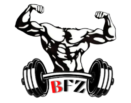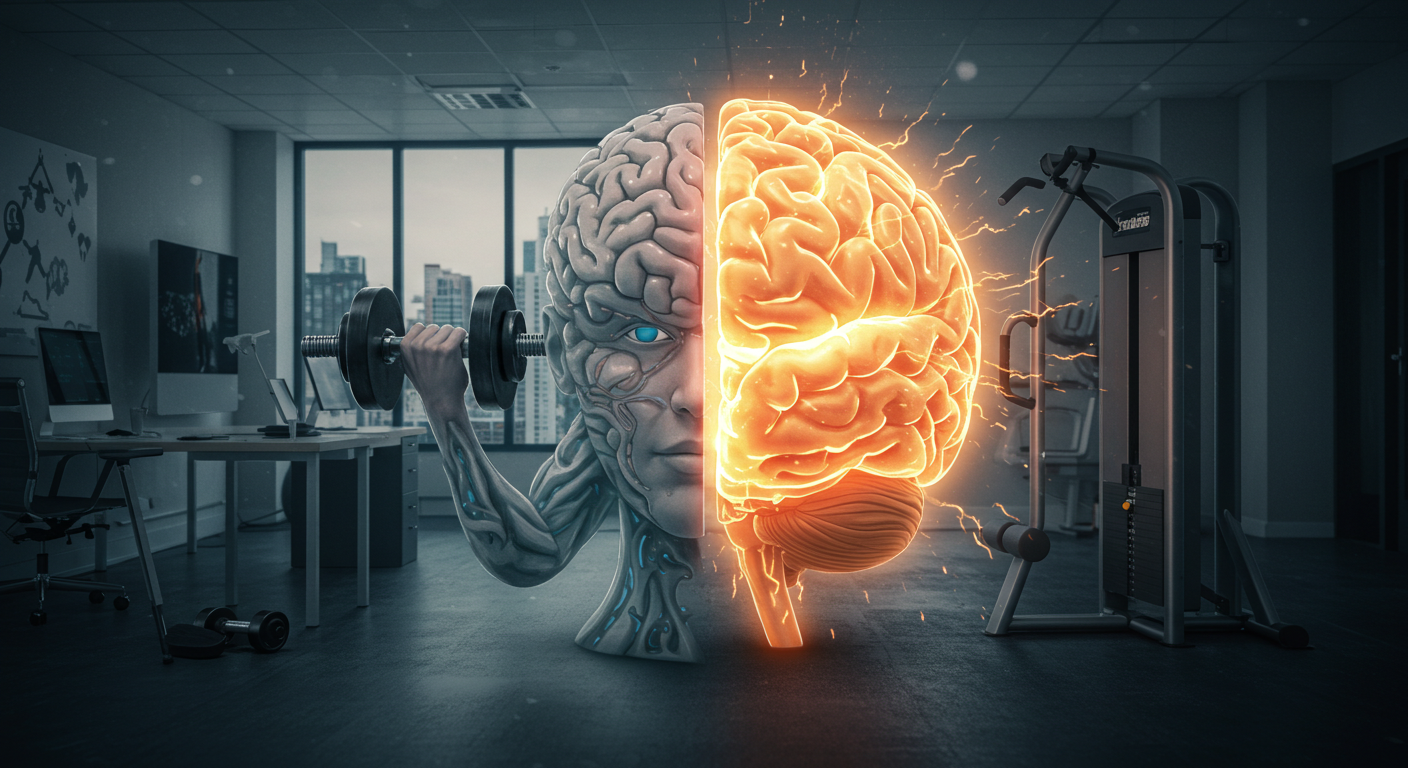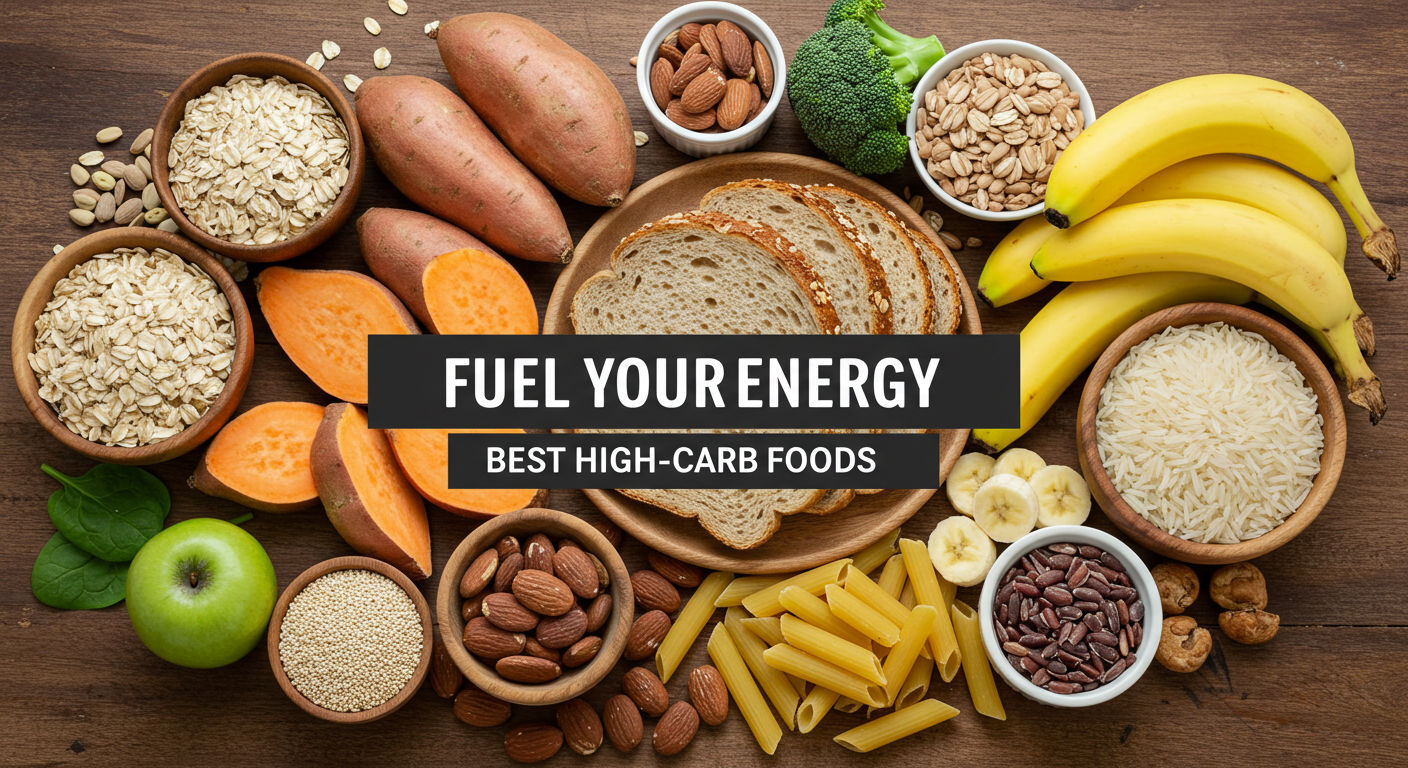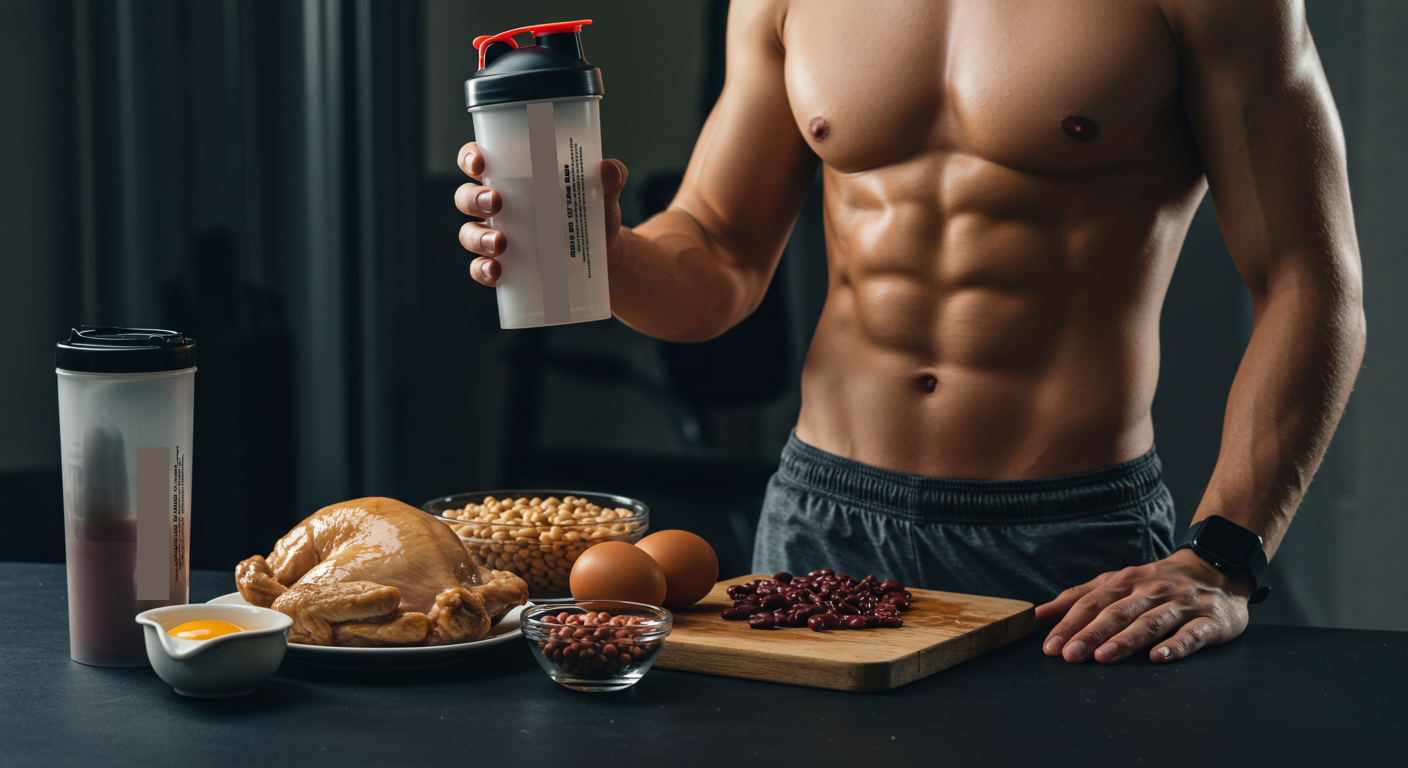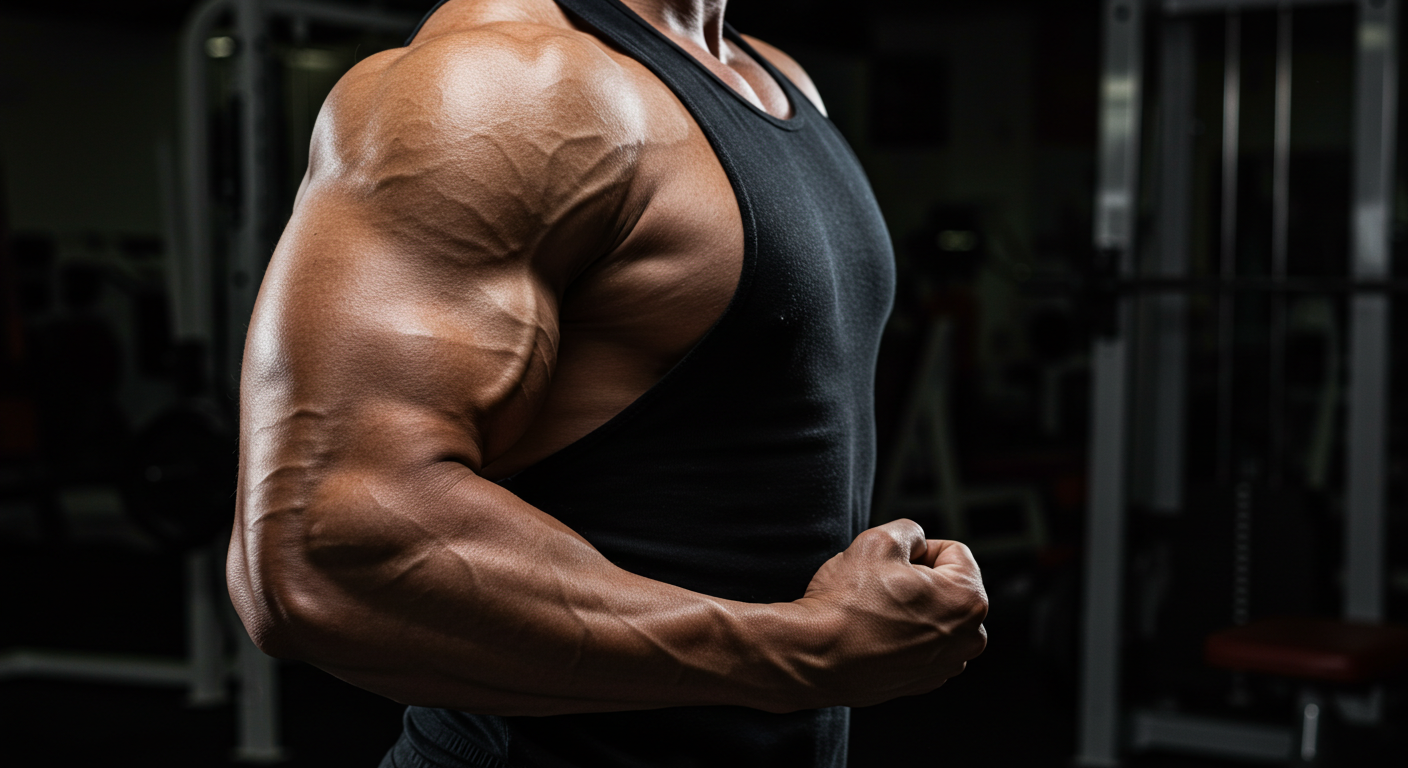The shoulder is the hallmark of your self-confidence.
It’s not just the silent hero of the upper part of your body, it is also the foundation that gives your body an image of strength, symmetry, and dominance. 50-60% of the formation of a picture-perfect V-shaped body depends on the width of the shoulders. When your shoulders are wider, it affects the structure of your entire body – your arms look bigger, clothes fit better, and you look stronger.

Many people especially beginners, often focus more on biceps, but if your shoulders do not improve, you will never get a full and balanced muscular body. If you want to look muscular, attractive, and strong, then there is no chance to ignore your shoulders.
In this article, you will learn:
What are the best exercises, and how to train every part of the shoulder effectively? What are the common mistakes that are hindering improvement? Some advanced and effective tips to make the shoulders look wider.
Are you ready? It’s time to take yourself to new heights!
Understanding Shoulder Width & Muscle Structure
The shoulder structure is a very important and complex part of the human body. To increase the width of the shoulder, the development of three main muscles is very important. These three muscles work together to form the structure and shape of the shoulder. Let’s take a look at these three muscles:
Front Delt (Anterior Deltoid): This muscle is located in the front of the shoulder and it works when you lift the arm up. It aids during the forward push or any pressing movement, but its role is mainly less important for increasing the width of the shoulder. But its strong structure helps the front of the shoulder to look strong and heavy.
Side Delt (Lateral Deltoid): This is the most important muscle for increasing the width. This muscle on the side of the shoulder works to lift the arm outwards. If it is stronger and covers around 40-45% of your shoulder muscle. This part is the reason for making a man’s physique wider and more attractive, which is essential for the V shape.
Rear Delt (Posterior Deltoid): This muscle is located at the back of the shoulder and provides movement towards the back of the shoulder. It works when you move the arm back. A strong posterior delt supports the shoulder balance and gives the overall shoulder a well-rounded, broad, and wider size.
Warmup Before starting
Warming up before a workout is not just a formality before starting an exercise. It prepares your body in a way that helps you to build a strong mind-muscle connection and hit the failure. Warming up is the first step, which flexes the muscles and joints to reduce the risk of injury.
Our muscles and joints need to be given a little time to prepare before we start. Warm-up activates those muscles and increases blood circulation, which increases the efficiency of the muscles.
It not only helps reduce the risk of injury but also improves the results of your exercise. Some best warm-up examples are,
Arm Circles: Very effective in increasing the flexibility of the shoulder joint.
Dynamic Stretching: You can do this to keep the front and back muscles of the shoulder ready.
Exercises to activate the shoulder with a lightweight:
- Lateral raise
- Front Raise
- Bent-over reverse fly
- The overhead press
Prioritize Lateral Delts
First of all, you need to understand that the side delt is the outer part of your body, which increases the width of the shoulder. Because it is located on the outside of the shoulder, if you can improve it, the shoulder will look wider and fuller.
Lateral delts are the largest of the three main muscles of the shoulder. It is located on the side of the shoulder, which is the largest muscle and contains about 40-45% of the shoulder muscle mass, which means it covers one-third of the shoulder. So, this being the largest muscle in your shoulder, its importance is also very high.
Since the side delt is the largest muscles in the shoulder, it is important to choose scientifically effective exercises to build and strengthen it. A 2024 study found that to strengthen a muscle you must give at least 40% to 60% MVIC (Maximum Voluntary Isometric Contraction) activity.
When you train the lateral delts well, the overall shape of your shoulder and the strength in your body reach it’s peak level. I would suggest you prioritize 50% only for the side delt during shoulder workout, it’ll help to bring the fastest result.
Increase shoulder Training frequency (a separate Shoulder Day)
The shoulder is a muscle that is active in some way in almost every upper-body workout. However, just acting as a secondary muscle during a big lift does not give enough growth. The three parts of the shoulder need to be developed separately. Many people train the shoulder only once a week with another muscle group, and mostly they train this part at the end. Which is not a good idea.
A 2016 meta-analysis study found that individuals who worked out at a frequency greater than once a week (2 or 3 times) had significantly better or “superior” muscle size results. This study analyzed 10 different studies and found that training twice a week leads to more hypertrophy than training once a week, even if the volume remains same.
I would suggest to train this at least twice a week. If possible, dedicate a day separated only for the shoulders, but if the situation is like, you have to train this with another group of muscles, then make sure to start with your shoulder. When properly trained 2-3 times a week, it grows faster and becomes wider and stronger.
The biggest advantage of high training frequency is that it provides additional growth stimulus. The muscles of the shoulder are relatively small, so they recover quickly. With proper and frequent training, you can ensure giving enough stimulation to each part, which increases hypertrophy and also improves overall size and strength.
Another advantage of having a separate shoulder day is that each part can be focused on specifically. Sometimes, due to the compound lift on the chest or back day, the shoulder gets tired beforehand, which makes it difficult to do heavy workouts. However, training on a different day allows for enough sets and reps for each head, which ensures balanced growth and maintains muscle balance.
Most importantly, high training frequency also helps in preventing injuries. With proper warming and planned load management, the possibility of excessive pressure on the shoulder is reduced, making it more strong and defined.
Mind-Muscle Connection & Proper form
The mind-muscle connection (MMC) and proper form are extremely important in muscle building. Mind-muscle connection means that when you train a particular muscle, you focus completely on that muscle and feel that it is working. As a result, when you can properly create the feel, it becomes more active, which helps in growth and also makes your workouts more effective.
To build the mind-muscle connection, slow down each rep of the exercise and focus fully on that muscle. Try to feel how the muscle is working. This process will improve your performance and muscle engagement, which will bring better results.
Also, it is very important to maintain the correct form. Weightlifting in the right form keeps you safe from injury and allows your muscles to work properly. Exercising in the wrong form puts extra pressure on the joints and ligaments, which can cause problems in the long run. But by following the right form, you can reduce the risk of injury, and at the same time, your muscle mass also increases rapidly.
Since the right form and the mind-muscle connection work together, that’s why these things should be applied correctly. When you focus on the muscles during each rep and do weight training in the right form, your results will change quickly.
Start Your Program With Shoulder
Shoulder is a very important part of the body, and we can get great benefits if we train it seriously. Although the shoulder muscles are of medium size, they work in various important movements of the body. Shoulder muscles are also active during exercises such as chest press, row, and deadlifts. This means that with a tired shoulder, you will not be able to give your 100% when you go to train.
A study found that the muscles that were exercised earlier showed the most improvement. The study found that the parts that were exercised at the beginning of the session increased both muscle size and strength. And the rate of growth was not very high for the muscles that were worked out later.
Since it’s a medium-sized muscle, the shoulder muscle can get tired very quickly. That’s why when you start with your shoulder, more energy is already stored in your muscles, and you can train them with your 100% potential. It helps to train the other muscles harder, and the whole routine becomes more effective.
A strong shoulder supports the other body parts. So that you can get the stability and strength properly in other heavy lifting or pushing movements, also reduce the risk of injury.
Use Progressive Overload Smartly
Progressive overload, which means gradually increasing the weight. It puts the right amount of pressure on our muscles to become stronger. However, if it is not done correctly, you may not improve, or you might be injured.
Try not to put on too much weight at first. Remember, you have to work in small steps, it’ll be very stressful for your shoulder if you increase it too much at once, If your body can’t handle the weight of the sky, you will easily exhaust and injure yourself.
But not only should the weight be increased, but also the number of reps, sets, and intensity should be increased. Make sure to perform each set in the correct form. It is very important to keep an eye on the form in shoulder training.
A regular and structured plan is essential for progress because progressive overload means not only gaining weight but also putting the right amount of pressure at the right time. That’s how muscles are gradually strengthened, and you find a better result.
Shoulder Symmetry & Posture Matters
The correct alignment and posture of the shoulder is not only important for the external appearance, but also equally important for injury prevention, performance, and increasing strength. Sometimes one side of the body becomes strong, while the other side remains weak; as a result, you’ll lose muscle balance. This can have a negative impact on back pain, joint stress, and performance.
To maintain proper shoulder balance, it is important to develop the entire shoulder muscle equally. Many people work more on the front and mid shoulder but ignore the back, which can cause of imbalance in the structure of the shoulder. Properly balanced training and evenly weighting for both hands should be used.
Applying a little stretching and warmup, like foam rolling or resistance band exercise, before a workout increases muscle elasticity and helps reduce injury. Doing everything right, the shoulder will be strong and well-formed.
Focus on High-Quality Reps with a Full Range of Motion
When you train your shoulders, it’s not enough to just lift heavier weights or perform more reps. Performing reps in a full range of motion is much more important. You can target your muscles effectively and start muscular growth when you are in the correct position and exercising with the full range of motion.
First, working at full range puts more tension on the muscle, which is extremely effective for muscle growth. For example, if you’re doing an overhead press, using the full range of the hands up and down creates good stress on the shoulder muscles. But if you work in a partial range, muscle growth may be hindered and muscle groups will not be fully activated.
Another important aspect is to control the eccentric, which allows the muscles to work fully. Avoid hurrying or using other parts of the body. This will reduce the injury and the muscle group will be fully functional.
If you’re a beginner, then learn the correct form and technique with lightweight and then gradually increase the weight, but never compromise with the form and range. The more you work on the entire range of the shoulder, the more balanced and stronger it will be. This method will help to increase muscle mass, elasticity, mobility, and overall strength.
Try different angles, equipment & variations for maximum Growth
It is not enough to use only one type of exercise or a certain angle for the proper development of the shoulder muscles. The shoulder has seven different muscles that are mainly divided into three different parts, and each part requires a different angle to trigger them properly. Therefore, it is important to use different angles, exercise variations, and equipment to fully develop those muscles.
A study showed that the activity of the shoulder muscles depends on which side the arm is being lifted. Especially when the arm rises upwards between 30 degrees and 90 degrees, the muscle function gradually increases.
When you work the shoulder muscles at different angles, the range of motion increases. Boosts muscle mass and strength. When you’re working regularly following one type of routine, the muscle continues to work at the same speed, which can reduce its efficiency. But when you use different exercises, angles, and equipment, they send different signals to your brain and also respond differently, and their performance increases.
Moreover, it is possible to change muscle tension through the use of different ways. Using different equipment such as dumbbells, barbells, cable machines, kettlebells, etc, ensures different responses and the overall development of your shoulder.
Train to Failure + Partial Reps
“Train to failure” and “partial repetition” are two very effective techniques for shoulder training. Using them, you can give your muscles new challenges.
Train to Failure:
A study from 2016 found that experienced athletes who train until their muscles fail have much bigger and stronger muscles. It is impossible to achieve the same level of hypertrophy without going to failure, especially when you’re using light weights.
In this technique, you do as many reps as possible, until your body can’t handle to push anymore. This causes your muscles to experience a lot of stress, which is necessary for them to become stronger and bigger. When you reach the point of failure, it challenges your muscles even more and makes more micro tears. As a result, when it recovers, it becomes bigger than before.
Partial Repetition:
A 2024 study found that when the muscles are stretched to half the range called lengthened partial reps. It helps to increase muscle mass and improve strength in the same way as full range of motion.
This is a technique where you do it in half range without using the entire range of movement. For example, if you press overhead, you will do a partial repetition without going up completely. It allows the muscles to work in a new way and also helps to increase muscle size and strength. Especially when you put the load on the top part and do some more repetitions, the muscles are activated differently, which makes them even better.
“Train to Failure” will help you push beyond your limits, while “Partial Repetition” will target your muscles more effectively. The combination of these two will give you quick results.
Posing After Exercise (Flexing for Muscle Control & Definition)
Flexing a little while standing in front of the mirror after completing a workout is not a show-off, but it’s a very effective habit for muscle control and improvement. When you flex the shoulder or other muscles after exercise, it not only looks good, but your muscle definition becomes clearer, and the mind-muscle connection is also strengthened.
A study found that neuromuscular fatigue and activation of muscles work differently when muscles stay in an isometrically compressed state (such as flexing after exercise). Especially when flexed in the short position, the mind-muscle connection is activated better.
Another study in 2015 found that muscle blood flow and oxygen levels increase rapidly during an isometric hold. This increases blood flow, which gives a better pump to the muscles, and recovery is faster. Also, it helps you understand which muscles are overworked and where to focus more. Suppose you flexed the shoulder after the workout – this will show which part was more active and where there is scope for improvement.
It’s not very time-consuming, just flexing around 10-15 seconds, this will allow you to better understand the muscles and gain better control over time. So, it’s not enough to just do weight lifting, after a workout, flex a few moments in front of the mirror, feel the muscles, and track your progress – this is real smart training!
Don’t Ignore Traps & Upper Chest
If you only focus on the shoulder muscles and ignore the traps and upper chest, your shoulders looks will be incomplete.
The upper chest is trained on the chest day, but it is important to train it correctly targeted way. When you train it properly, strong connections are made between your shoulders and chest, which increases the size and visibility of your muscles. Similarly, the development of traps makes the beauty and profile of your shoulders more complete.
Therefore, along with the shoulder muscles, the traps and upper chest should also be trained seriously so that the muscles of the entire shoulder area develop and your physical structure is balanced and strong.
Optimize Recovery & Nutrition
Nutrition, not just for the shoulder, but it’s necessary for overall muscle growth and development, but nutrition alone is not enough. Some additional activities are also required for the proper recovery of the shoulder.
Your body requires proper nutrition for quick shoulder muscle repair and strength gain. Protein and omega-3 fatty acids help to recover faster, and vitamins and minerals help to rebuild body tissues.
However, not only nutrition, physical therapy exercise and stretching are also very important. If your shoulder muscles and ligaments are stiff or strained, then do some stretching to increase your flexibility and strength. Especially the rotator cuff and stretching exercises work better. Also, if you feel pain that you think is not normal, use an ice pack instantly and talk to your trainer.
Clothing Hacks for a Wider Shoulder Appearance
Broad shoulders make one look more confident and athletic. But what if your shoulders aren’t wide enough? Easy! Choose the right style. A few small changes can make your shoulders look bigger. Let’s take a look at the best styling techniques.
- Choose a Blazer or Jacket.
A good blazer or jacket helps not only in fashion but also helps to sharpen the structure of the shoulders. Wear a blazer or jacket that has a light padding or structured design on the shoulder area. It makes the shoulders look broad and well-formed.
- Wear horizontal stripes
Wearing a T-shirt or sweater with horizontal stripes near the shoulders makes the shoulders look wider. It visually creates an illusion of spaciousness, which makes the upper part of the body look larger.
- Avoid raglan sleeves
Raglan sleeves (whose sleeves are curved) make the shoulders look narrower. Instead, wear set-in sleeves (where the shoulder joint is clearly exposed). This will better reveal the structure of the shoulder.
- Wear light-colored pants and a Deep color shirt.
Choosing the right color combination will also change your physical appearance. Wearing light-colored pants with a dark-colored shirt or T-shirt makes the upper body look wider, which helps to make the shoulders look wider.
- Layering
When wearing a light jacket, overshirt, or cardigan, the volume of the shoulders naturally looks higher. This effect is better if you wear a light-colored shirt or T-shirt under it.
- Button Detail on the Shoulder.
Military-style shirts or jackets, where there are buttons or special designs (epaulets) on the shoulders, make the shoulders look wider.
- Use the hand-wrapping trick
Wearing the sleeves of a casual shirt makes the shoulders look big and athletic. This is a simple yet effective technique that will make you look more stylish and confident in the moment.
Best Exercises
A structured shoulder workout plan is very important to build strong and balanced shoulders. It targets the three main parts of the deltoid: front, side, and rear. The right combination of compound and isolation exercises helps to ensure the strength, shape, and overall development of the shoulder. Here is a list of some of the most effective shoulder exercises that will help you achieve your goals.
- Front delt
- Overhead shoulder press
- Arnold press
- Front raises (Dumbbell/ Barbell)
- Side Delt
- Incline Lateral Raises
- Dumbbell Lateral Raises
- Upright Row
- Cable Lateral Raises
- Rear Delts
- Bent over rear delt Fly
- Cable Rear Delt Fly
- Face Pulls
- Reverse Pec Deck Fly
- Traps
- Shrugs (Dumbbell/ Barbell)
- Behind the back Shrugs
- Farmer’s walk
The shoulder is a medium-sized muscle, so 15-20 sets a week is enough to train it. But if you want to train twice a week, then you have to divide 8-12 sets each time. There will be scope for muscle recovery and there will be no overtraining.
What’s a Balanced Shoulder Workout Like?
1 compound exercise (overhead press / Arnold press) 3-4 sets
1-2 Side Delt Exercises (Lateral Rises / Upright Row) 3-4 sets
1-2 Rear Delt Exercises (Face Pulls / Reverse Pec Deck Fly) 3 sets
1 Trap (Shrugs / Behind-the-back Shrugs) 3 sets
The Bottom Line
Having strong and broad shoulders is not only for physical beauty, but it also increases your confidence and physical strength. Though it’s possible to improve the muscles of the shoulder with proper exercise and regular training. But everything is a matter of patience and time, so it is necessary to approach each exercise with attention, in the right form, and with sufficient rest. If you exercise regularly, not only will your shoulders become stronger, but your entire body will too.
So, start now! Take the right steps towards this journey to increase your shoulder strength and make yourself stronger, healthier, and more confident.
